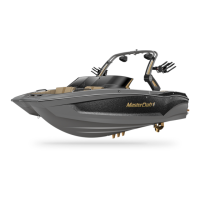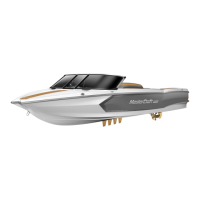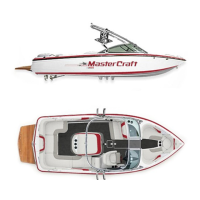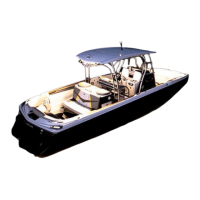AVIARA OWNERS MANUAL / 216
2. Use a stiff bristled brush or rag to clean away dirt and
stains. After cleaning, pat the teak as dry as possible with
a clean towel, then let it air dry.
3. Use a cloth or brush to saturate the teak with teak, tung
or linseed oil (front, back and edges). Push the oil into all
cracks, crevices and end grain.
4. Let the teak dry in the shade for 30-45 minutes. After the
teak has had time to soak in fresh oil, use a soft cloth to
gently buff off all excess oil that does not soak in.
Windshield
In cleaning tempered glass windshields, the normal glass
cleaners (from spray bottles or aerosol cans) work best. While
the glass is very strong, it can be scratched if anything abrasive
is used. Harsh chemicals or solvents should be avoided because
they may affect the vinyl gaskets, anodized or powder-coated
finish on the extrusions.
Canvas Covers
The material used in constructing boat covers is made from 100
percent solution-dyed polyester fiber with a urethane coating to
provide excellent water repellency and mildew resistance. This
design allows the material to be easily maintained. By following
a few simple care and cleaning steps, the fabric will continue to
look good and maintain its fine qualities for seasons to come.
Important Background Information
Because the fabrics are woven, they are breathable. It’s
also important to know that these fabrics are treated with a
fluorocarbon finish, which enhances water repellency. This
finish requires replenishment after vigorous cleaning. Polyester
fabric will not support the growth of mildew. Mold and mildew
need something on which to grow and polyester fabric is not a
desirable substance for such growth. Dirt or dust on the fabric,
however, is a perfect source for mildew growth, which makes
regular cleaning of the fabric important.

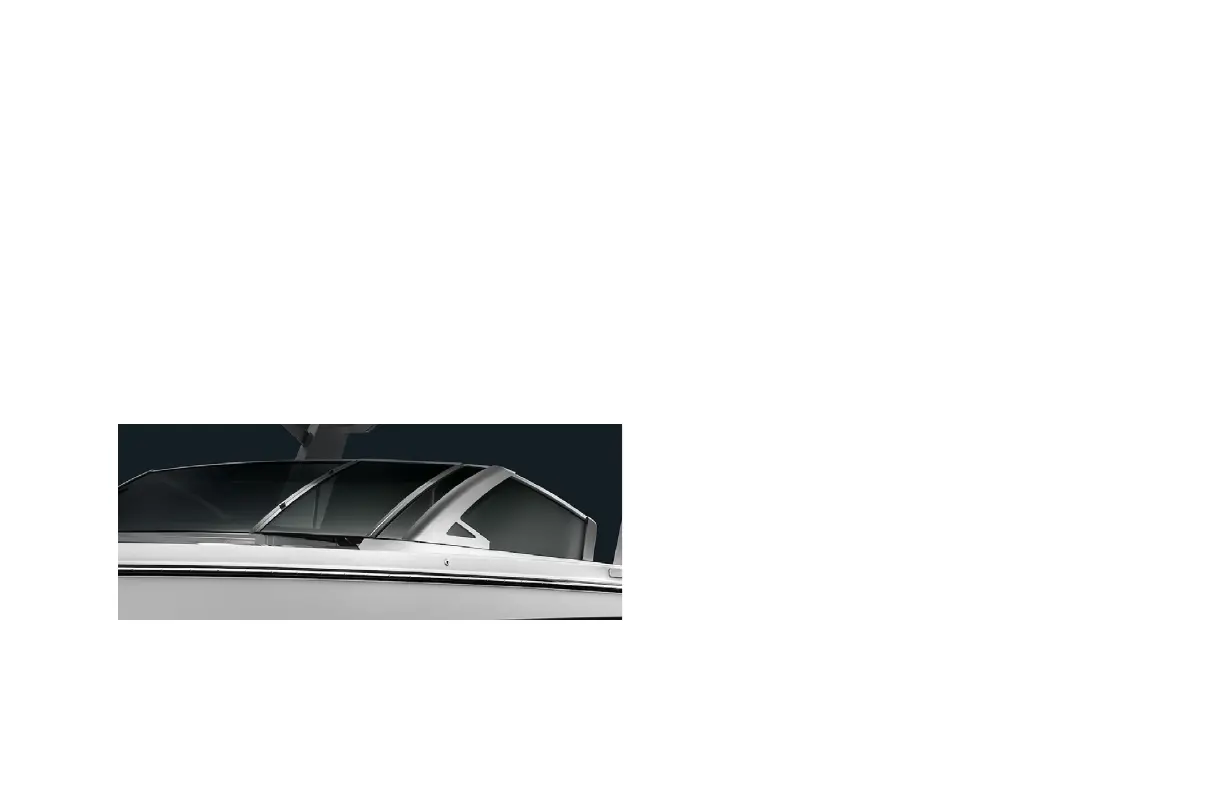